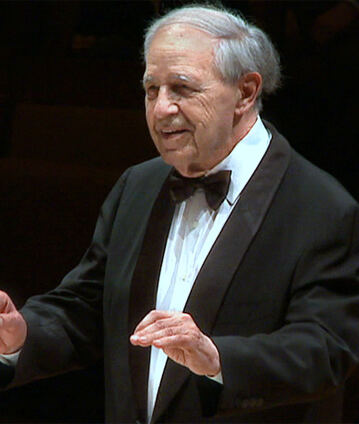Pierre Boulez and Pierre-Laurent Aimard with works by Ravel, Bartók and Boulez

Ravel’s Piano Concerto for the Left Hand is one of the most fascinating works ever written. Its intensity and virtuosity make the listener forget the unusual scoring and strikingly combine darkness and jazzy energy. Pierre Boulez and Pierre-Laurent Aimard are the celebrity interpreters of this performance, which was complemented by Bartók’s Music for Strings, Percussion and Celesta and Boulez’s own Notations.
There are a number of 20th-century works that owe their existence to a war injury: the Austrian pianist Paul Wittgenstein, the older brother of the philosopher Ludwig, lost his right arm in World War I. With the intention of continuing his musical career he commissioned leading composers of that day to write works for the left hand. In addition to such artists as Paul Hindemith, Erich Wolfgang Korngold, Benjamin Britten and Sergei Prokofiev, Maurice Ravel also complied with the wishes of the pianist. His Piano Concerto for the Left Hand, premiered in 1929, is unquestionably the most important of the compositions written for Wittgenstein. Pierre-Laurent Aimard, famous not least for his performances of contemporary music, shone as the soloist with the Berliner Philharmoniker under the direction of Pierre Boulez.
The programme showed a temporal and stylistic concentration typical of the conductor and composer Pierre Boulez: Béla Bartók’s Music for Strings, Percussion and Celesta, which is characterized by rhythmic elan and unusual instrumentation, was composed only six years after Ravel’s Concerto. The origins of Boulez’s own Notations also date back to the same period of music history, namely 1945, when he composed the first version for piano. Boulez was not only fascinated by developments in music history but also strived for ongoing growth in his own works. The last of the five pieces, arranged for large orchestra and substantially expanded in structure and length, did not appear until 1997, 52 years after the original version.
© 2009 Berlin Phil Media GmbH
Related interviews
Artists
Our recommendations
- Simon Rattle conducts Messiaen’s “Turangalîla-Symphonie”
- Schoenberg’s Piano Concerto with Pierre-Laurent Aimard and Jiří Bělohlávek
- An American evening with Ingo Metzmacher and Pierre-Laurent Aimard
- François-Xavier Roth and Pierre-Laurent Aimard
- Jonathan Nott and Pierre-Laurent Aimard
- Boulez meets Stravinsky